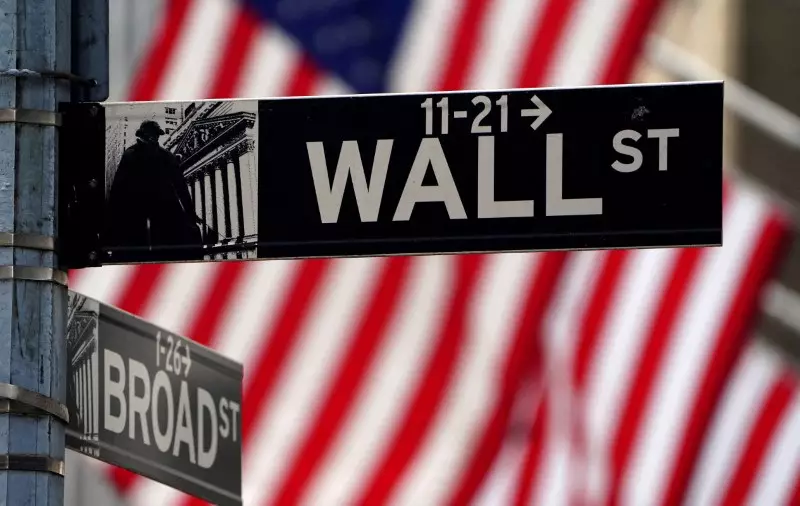The financial world is abuzz with anticipation as significant players like the U.S. Federal Reserve, European Central Bank, and Bank of Canada prepare for pivotal meetings that could reshape global market dynamics in early 2025. Coupled with this, the release of earnings reports from tech giants like Apple and Tesla is amplifying investor interest. Adding to the complexity are the political maneuvers and trade policy announcements anticipated from the new U.S. administration under President Donald Trump. This article delves into the intricate web of factors shaping the coming week for investors and analysts alike.
The Federal Reserve’s upcoming meeting marks a critical juncture, following a dramatic year where rate cuts totaled 100 basis points. As investors eagerly await the Fed’s decision, the prevailing sentiment points toward a likely pause in the easing cycle. This cautious approach stems from recent inflation data that, despite earlier predictions of an upward trend, has shown signs of stabilization. Market participants are curious about the Fed’s projections for further rate adjustments over the course of the year. The December signal indicating fewer cuts than anticipated added a layer of uncertainty, prompting investors to scrutinize upcoming statements for hints of future monetary policy direction.
Moreover, this week will feature key economic indicators, including the much-anticipated preliminary report on Q4 U.S. economic growth. The interplay between the Fed’s monetary strategies and economic performance metrics will be paramount in determining market reactions.
As European leaders prepare for their own monetary policy discussions, the prospect of additional rate cuts looms large, particularly against the backdrop of strained trade relationships with the U.S. The European Central Bank is expected to announce a 25 basis point reduction on Thursday, driven by economic sluggishness exacerbated by trade tariff threats from Trump’s administration. The implications for Europe cannot be overstated, as many countries within the eurozone remain vulnerable to the fallout from these potential restrictions.
Comments from ECB President Christine Lagarde will be closely monitored for insights into future rate shifts and their impact on stability within the region. Several central bank officials have hinted at a consensus for rates to approach 2%, aligning with the economic neutral point. This open-ended approach raises questions around how trade tariffs will affect inflation and the ECB’s ability to stimulate growth.
The upcoming announcement of U.S. tariffs on critical trading partners, including Canada and China, is set to create ripples across global markets. The complexity of these measures—where neighboring countries face steeper levies compared to China—has prompted analysts to question the strategic rationale behind this tiered approach to tariffs. It appears Trump may be attempting to foster a conducive environment for negotiations, especially as he utilizes platforms like TikTok to leverage negotiations.
As February 1 approaches, the global financial community is on high alert for any comments or hints from the administration that may signal further intentions or adjustments to the proposed tariffs. The potential impact on equity markets could be profound, particularly as investors recalibrate their expectations in response to this evolving dialogue.
Volatility and Investor Sentiment
Despite the tensions arising from geopolitical developments and economic indicators, market volatility has exhibited signs of retreat. Following the inauguration frenzy, the demand for hedging has diminished, suggesting a cautious optimism as traders adapt to new information. However, as we brace for the first week of February, the potential for sharp market fluctuations remains an ever-present reality. Traders will need to stay vigilant to navigate the whims of Trump’s commentary and the associated market reactions.
The historical context of U.S. tariffs and their impact on various sectors will be crucial for investor decision-making. Analysts expect further clarity on tariff specifics around April 1, but until then, market participants will have to contend with the ambiguity and possible erratic shifts in sentiment.
European Earnings Season: Uncertainty Amidst Recovery
Turning to Europe, the earnings season is not immune to the swirling uncertainties stemming from geopolitical and economic tensions. While fourth-quarter earnings are projected to show moderate growth, investor sentiment is tempered by concerns over the potential fallout from U.S. policies. Industries such as utilities and financials may shine, but overall optimism remains balanced by slower performance in sectors like energy.
Prominent companies, including LVMH and Deutsche Bank, are set to report earnings, and analyst projections suggest that despite the challenges, a resilient U.S. economy and a weakening euro could provide tailwinds for European exporters. With a significant portion of the STOXX 600 index deriving revenue internationally, shifts in the global economic landscape will have far-reaching consequences.
The upcoming week is steeped in anticipation as key central banks, market leaders, and geopolitical realities converge. Investors are poised at a delicate crossroads, where judicious navigation of these multifaceted developments could lead to opportunities or pitfalls in equal measure. As the global market landscape continues to evolve, staying informed becomes imperative for anyone looking to make sense of this tumultuous field.

